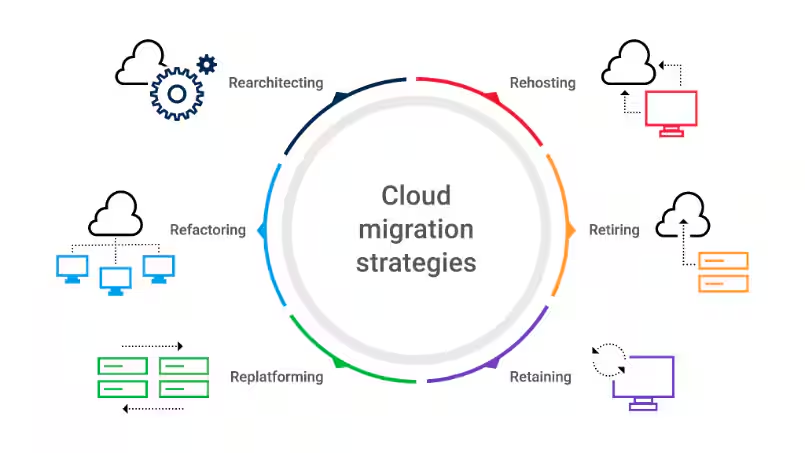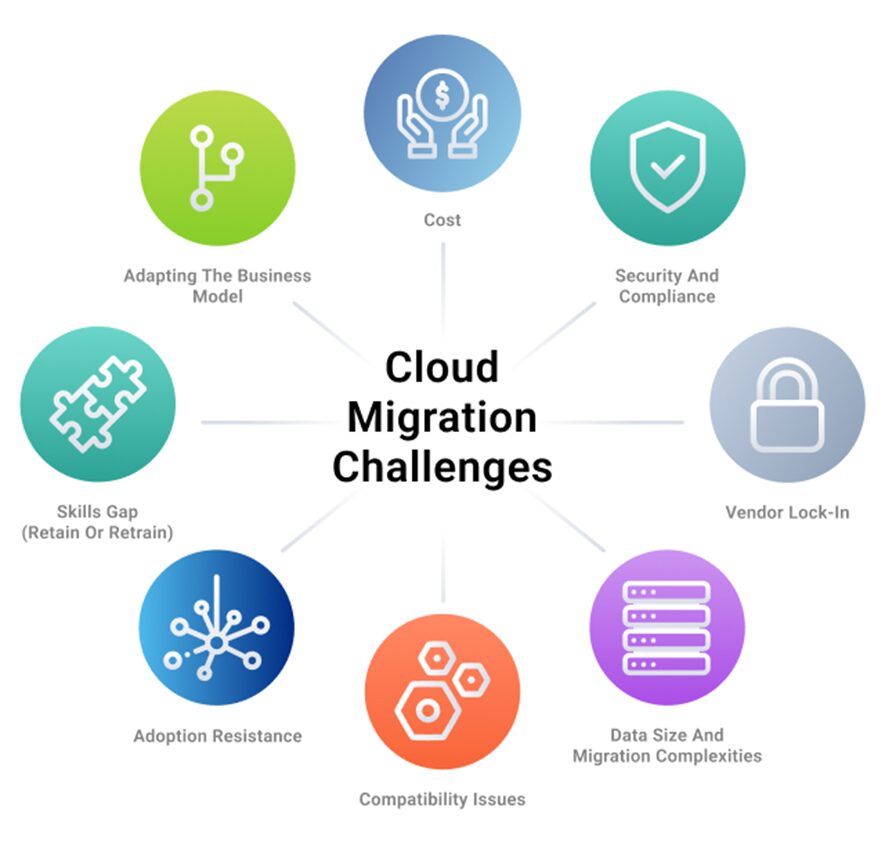In today’s driven world, cloud computing is not just a technological trend; it’s a business necessity. From startups to Fortune 500 companies, organizations are shifting their digital assets to the cloud to enhance agility, scalability, performance, and cost-efficiency. The shift from on-premise to cloud is known as cloud migration. It reshapes how enterprises operate in a data-driven world.
This blog will give you detailed information about the strategies, emerging trends, benefits, and the role of leading providers like AWS, Google Cloud, IBM, and Red Hat in cloud migration. Let’s learn about cloud migration with WeCloudData- The leading data and AI training academy!
Understanding Cloud Migration
Cloud migration moves IT procedures, data, and apps from on-premises infrastructure to cloud environments. Depending on organizational requirements, this shift can be to public, private, or hybrid clouds. The main objective is to utilize cloud computing’s advantages, such as cost reductions, scalability, and flexibility.
IBM defines cloud migration as transferring workloads, data, and apps from a data center to a cloud-based architecture or between cloud environments. In addition to being a technology change, this approach is a calculated step to modernize IT operations and stimulate business innovation.

Cloud Migration Services
The demand for cloud migration services has surged, and the market size of cloud migration services reached USD 11.2 billion in 2024 and is set to grow at a CAGR of 26% from 2025 to 2034, led by the increasing demand for agility and automation in business operations. These services include evaluating, planning, implementing, and optimizing cloud migration projects. Major cloud migration server providers worldwide include Amazon Web Services (AWS), Microsoft Azure, and Google Cloud Platform (GCP).
- AWS Cloud Migration: To enable smooth transfers to the AWS cloud, AWS offers a full range of migration tools and services, including the AWS Migration Hub, AWS Application Migration Service, and AWS Database Migration Service.
- Google Cloud Migration: With its unified platform, Google Cloud’s Migration Center expedites end-to-end cloud journeys by offering tools for planning, execution, and assessment.
- IBM Cloud Migration: Cloud migration is facilitated by IBM’s Turbonomic software, which optimizes cloud utilization from the initial phase and streamlines the transfer process.
- Red Hat Migration Services: Red Hat provides solutions focusing on automation and modernization for moving workloads and applications to cloud environments.
Cloud Migration Strategies
Developing a solid cloud migration strategy is essential to a smooth transfer. AWS describes the “7 Rs”-seven migration strategies, explained briefly below;
- Retire: Dismantling applications that are no longer useful.
- Retain: When migration is not practical, applications are kept on-premises.
- Rehost: “Lift and shift” approach, moving applications to the cloud without modifications.
- Relocate: Moving applications to the cloud without purchasing new hardware.
- Repurchase: Replacing existing applications with cloud-native solutions (move to SaaS).
- Replatform: Making minimal changes to applications to optimize for the cloud.
- Refactor: Re-architecting applications to fully leverage cloud capabilities.

Cloud Migration Tools
Effective cloud migration relies on a suite of tools designed to streamline the process:
- AWS Migration Evaluator: Provides data-driven insights to build a business case for migration.
- Google Cloud’s Database Migration Service: With no downtime, Google Cloud’s Database Migration Service makes it easier to move MySQL and PostgreSQL databases to Cloud SQL.
- IBM Turbonomic: Provides cloud migration planning, streamlining the migration process, and optimizing cloud usage.
- Red Hat’s Migration Toolkit for Applications (MTA): Large-scale application modernization initiatives across hybrid cloud environments are accelerated using Red Hat’s Migration Toolkit for Applications (MTA).
Cloud Migration Challenges
While cloud migration offers numerous benefits, it also presents challenges. It is essential to understand these challenges and prepare proactively to mitigate risks. Some key challenges include;
- Data Security and Compliance: It is crucial to guarantee data security and compliance with legal standards.
- Downtime and Disruption: Business continuity depends on minimizing service outages during relocation.
- Cost Management: Controlling expenses and avoiding unexpected costs requires meticulous planning.
- Skill Gaps: Lack of in-house expertise can hinder migration efforts.

Building Cloud Expertise with WeCloudData
At WeCloudData, we recognize the critical role of education in successful cloud data migration. Our offerings include:
- Big Data Cloud Training: Equipping professionals with skills to manage and analyze large datasets in cloud environments.
- Cloud Computing Courses in Canada: Providing comprehensive cloud technology training tailored to the Canadian market.
- Cloud-Data-Consulting: Offering expert consulting services to guide organizations’ cloud migration journeys.
By investing in education and consulting, businesses can confidently navigate the complexities of cloud data migration.

